Horses can have a variety of colors to their coats. Chestnut horses are all brown, Bay is brown with a black mane and tail and a grey horse is grey and white. These are the most common horses you'll encounter but they aren't close to how many breeds are actually out there.
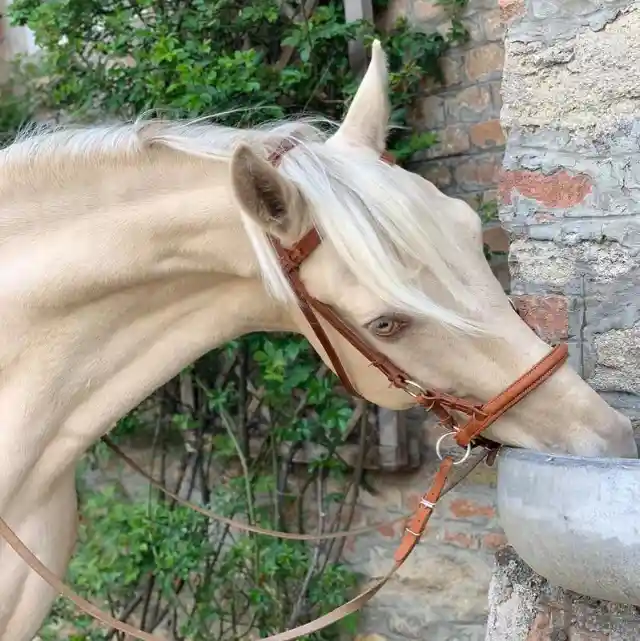
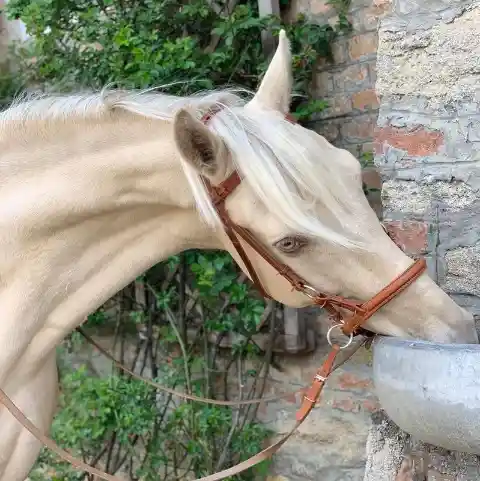
Even though horses can have similar or the same color coats that doesn't mean they're identical. Some horses have truly unique coats that are almost like fingerprints. There's even one horse that literally spells it out for you.
Painted Horse
So here's a pinto. They've got a fairly basic coat color but this one, in particular, has a pattern similar to another animal. Cows may have their black and white smudges, this girl has her brown and white.
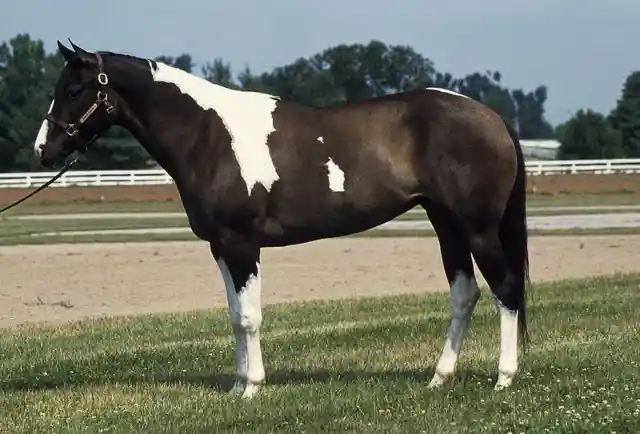
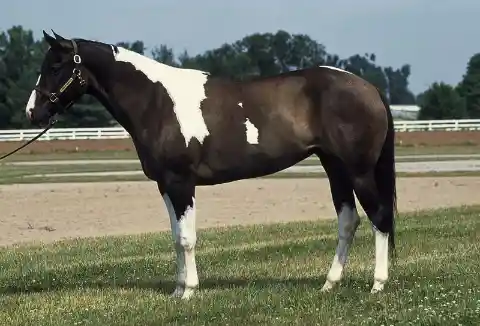
People sometimes call this horse "painted." Not all paints are pintos though! Some horses can be a mix of different breeds that include pinto. Paints are normally actually part thoroughbred and part quarter horse.
A Unique Gene
Sabino 1 gene creates unique spots on a horse's coat. The spots are always white and the horses are normally called Sabinos. Sometimes the horse may look like a sabino when in actual fact, it's a roan.
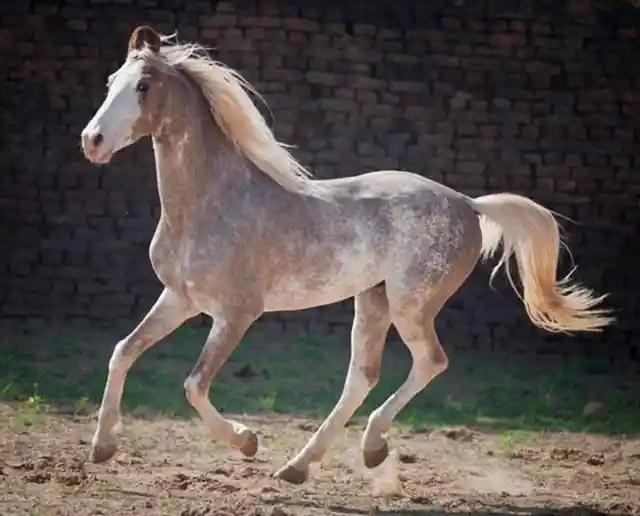
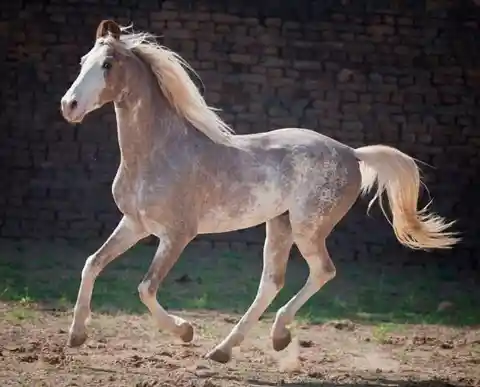
While roan horses will have a white coat throughout their body, Sabino will only be roan around their belly and face usually.
Red Roan
Here's a red roan quarter horse. It's quarter because of the muscular hind end. You can tell a roan by the solid color mixed with some white in its coat.
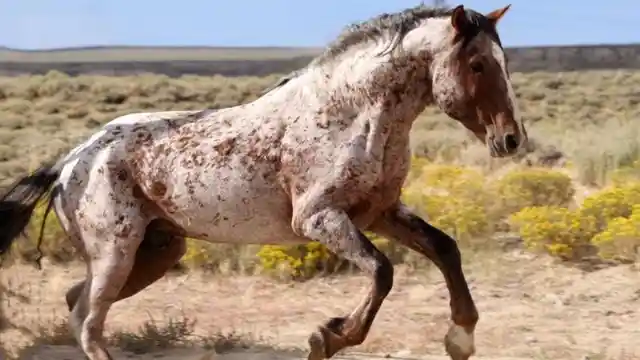
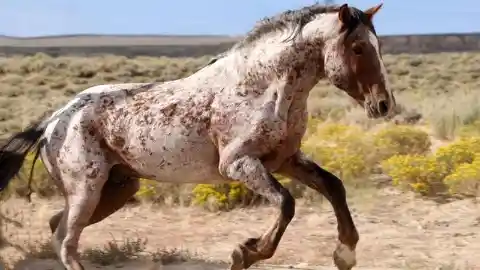
Red roans are unique in having a more chestnut base coat while the white spotting can have an almost pink effect. Their tails and manes will always be brown.
Dappled Grey
White horses are called greys. Greys will either be white or grey. When a dappled grey is born and young they normally actually have quite a dark coat. As they get older their coat gets the dappled grey you can see in the picture.
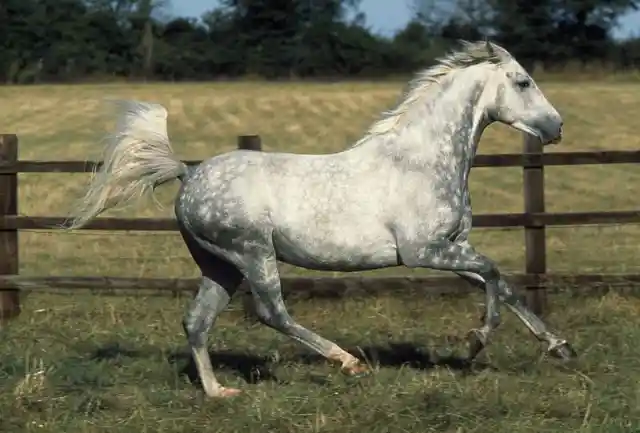
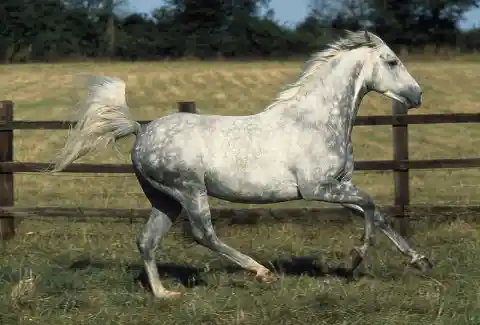
The dapples will eventually disappear as the horse gets into maturity. You can tell this horse is not too old since he still has dapples. This is a transition period for the grey before he loses all of his dapples and will be white or grey entirely.
Another Paint Horse
Here's another paint like the one from earlier. Remember when we mentioned how unique each can be? Well, this horse entirely different from the other paint with a beautiful white body and brown back and neck. They also have some brown on their top lip.
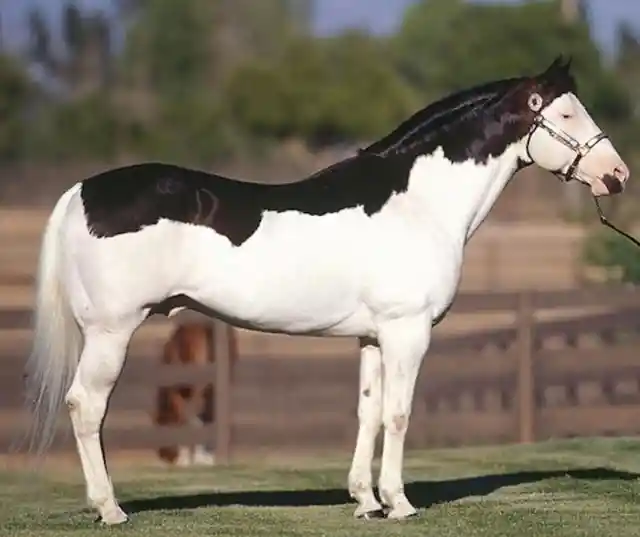
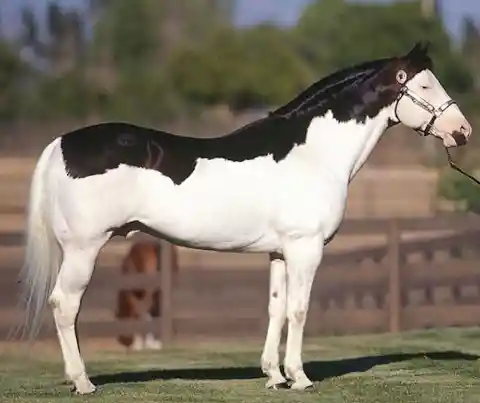
Paints are not symmetrical and the left side of this horse could very well be entirely brown. But at least from this side, they look like two horses were merged together into one!
Cremellos Can Be Shiney
Cremello coated horses will normally have a pinkish color and sheen to them. They also normally have clear blue eyes. Even though these horses are technically chestnuts you'd never guess from their coat.
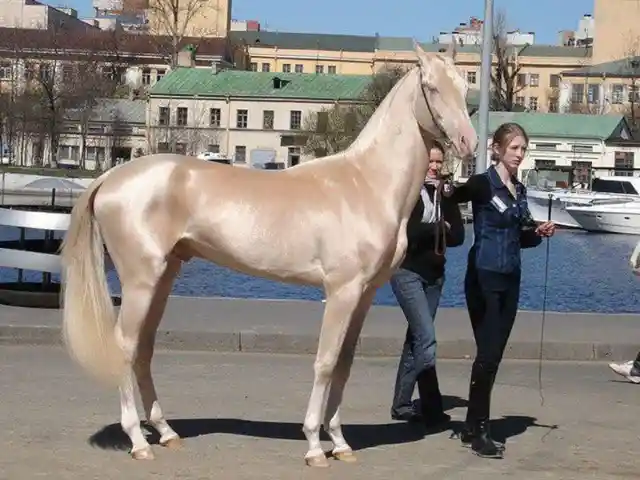
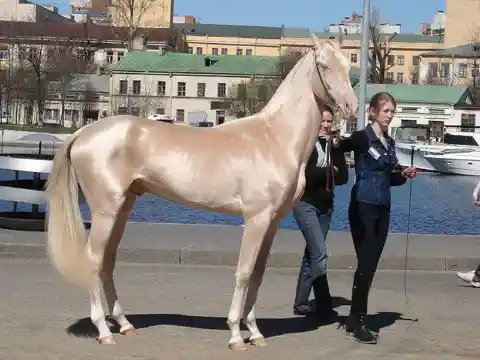
This particular is an Akhal-Teke, a breed that originates from Turkmenistan. This breed is one of the oldest on earth. The gene that cremellos carry is "cream" and this can create some interesting colors.
Perlino
Here's a horse with a perlino coat. Like the cremello they have the "cream" gene and perlino coats mean that they have homozygous cream genes. This means that it's a bay horse whose brown coat have been mutated by the lighter gene.
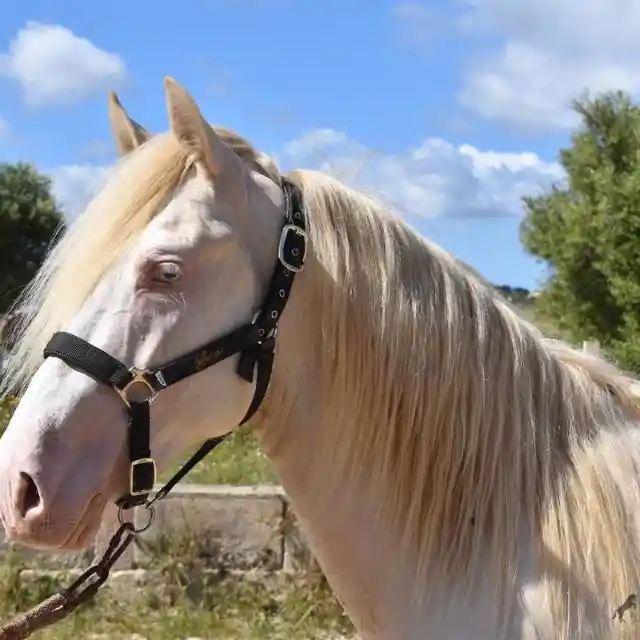
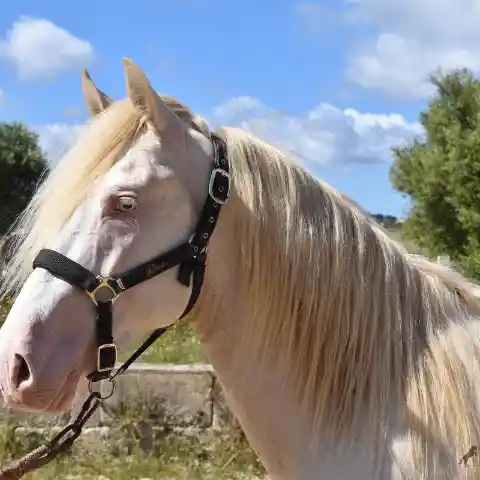
Perlino's manes and tails will usually be reddish in color. It's difficult to tell cream horses actual breed. DNA tests are normally required to tell if it's a bay horse with the gene or something else.
Here's A Dappled Grey Paint
Here's an interesting coat. Remember the dappled grey? Remember the paint horse? Well, this is a horse with both which gives it a mottled coat where the dark patches are still dappled.
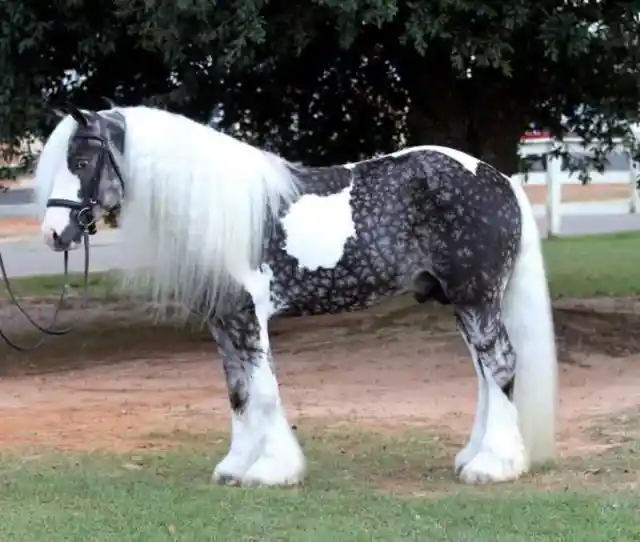
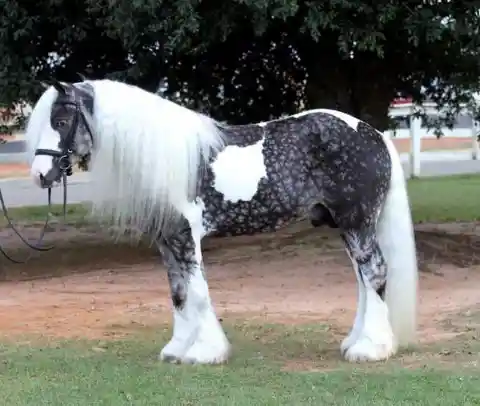
The horse will lose those dapples as they get older as the dark spots will lighten up like the rest of their body. This horse also have hair around their feet, the proper name for the fur is feathers.
The Silver Buckskin
A horse with a solid can body and a black mane and tail is called a buckskin. If a buckskin has the silver dappled gene then it will be a silver buckskin, a rare combination. Instead of tan bodies, they have silvery, grey ones.
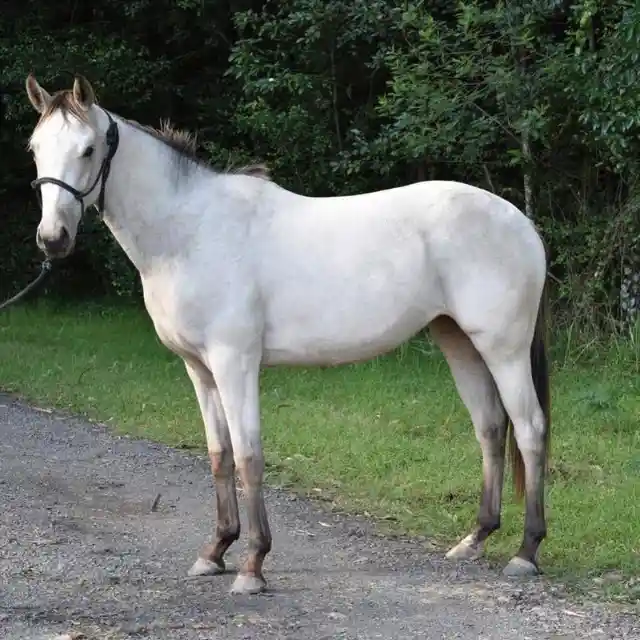
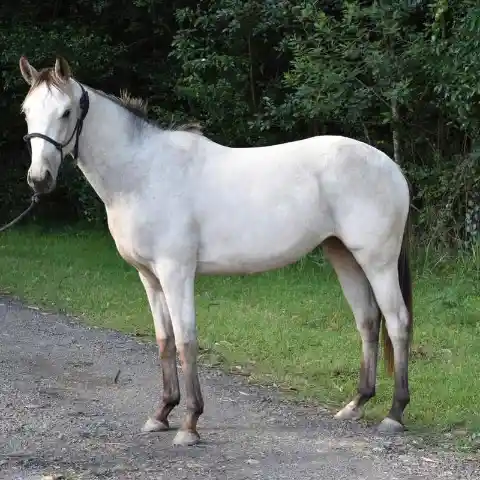
A typical characteristic of buckskins is their darker shins, which this horse happens to have. Other horses won't have dark legs and instead will have white legs called "stockings."
Palominos
Palominos have golden-brown coats and light manes and tails. They are a more glamorous horse and has the "cream" gene to attribute their beauty to like their cousins the cremellos.
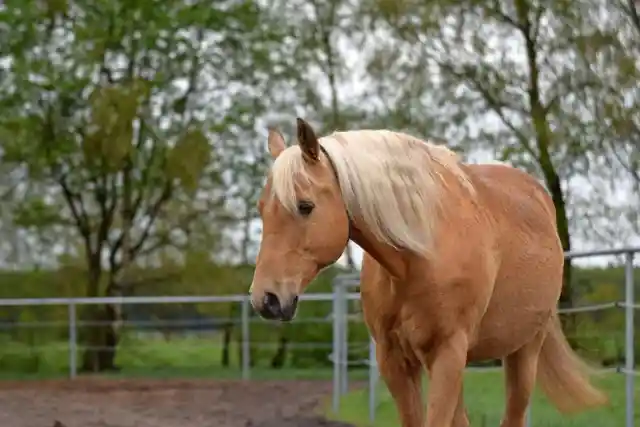
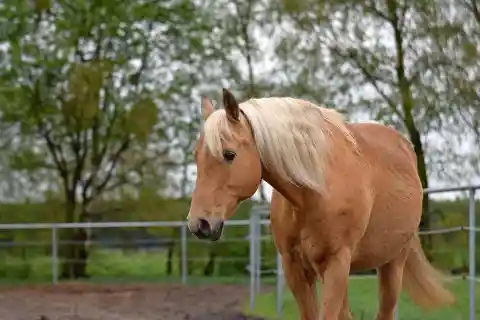
Palominos are also quite a rare coat compared to others like chestnuts and bays. The palomino color is actually a mutation of a chestnut coat, but chestnuts are much more common. Palominos can be dark or light to a degree.
These Horses Are Called Leopard Appaloosas For A Reason
As we already know, appaloosa horses come in all different shapes and sizes. These are leopard appaloosas. Leopard appaloosas are white horses with dark spots that cover their entire bodies, including below their knees.
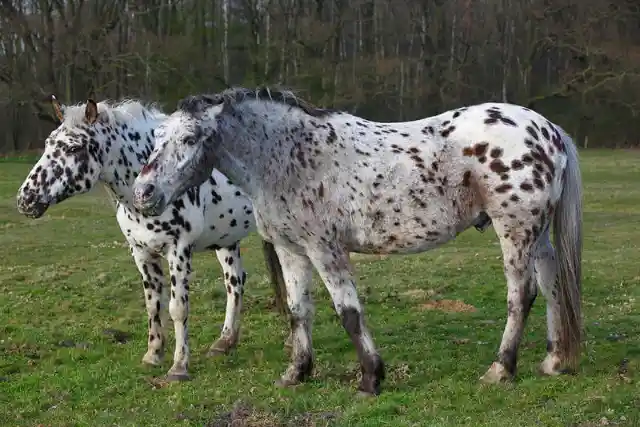
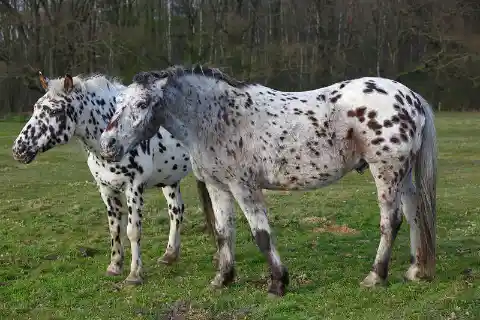
Like most other appaloosas, they have prominent scleras, which means you can see the white part of their eyes when their eyes are open and at rest. These appaloosas also have mottled manes and tails. They kind of look like overgrown dalmatians.
The Tiniest Appaloosa In The Land
This is a mini horse. Mini horses are even smaller than the smallest breeds of ponies. By the way, for all of you horse newbs out there, ponies are not baby horses. A pony is a horse that is under 14 hands. “Hands” is a measurement specifically used for horses. One hand is four inches, and a horse’s height is measured from the floor to its withers, which is the spot where their neck meets their back.
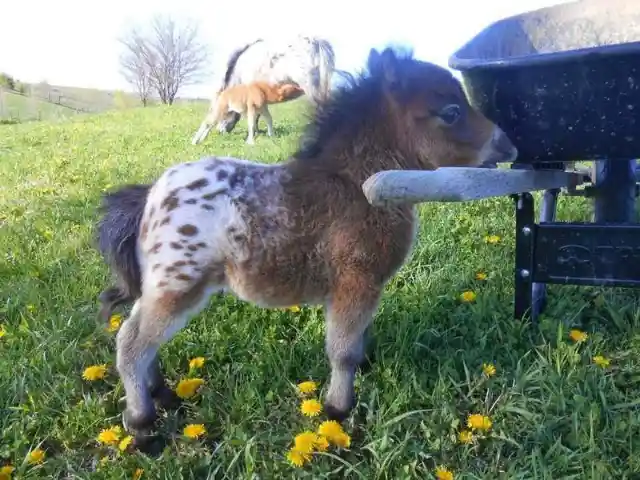
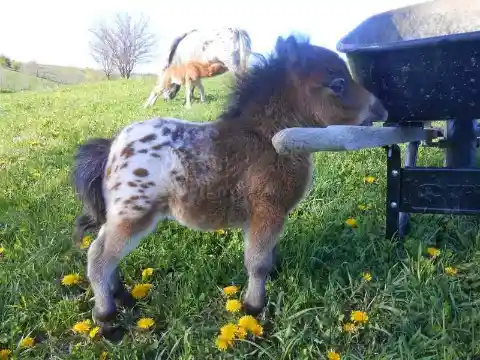
This mini horse is a blanket appaloosa, which is kind of like a leopard appaloosa except the appaloosa coloring only covers a “blanket” of fur over the horse’s rear end.
Flaxen Manes Always Stand Out
Horses with flaxen manes have manes and tails that are lighter in color than their bodies. This horse has a chestnut coat, a flaxen mane and tail, and a stripe on his face.
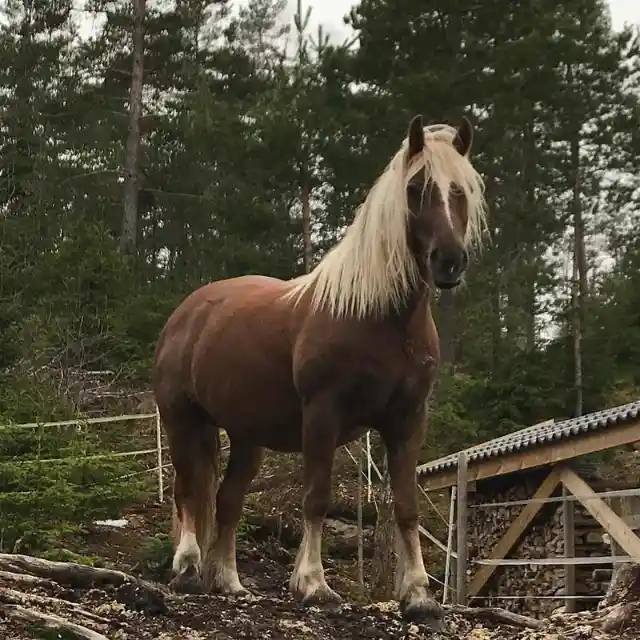
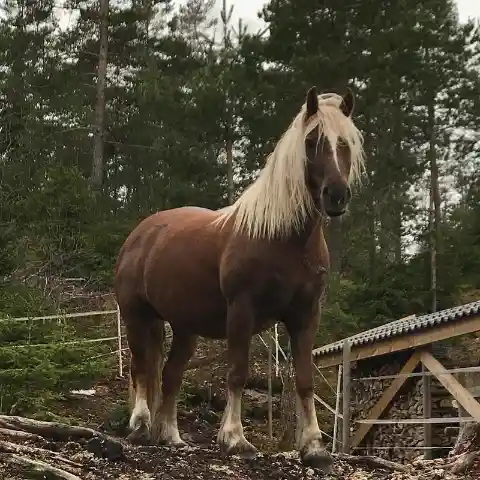
A “stripe” is a white face marking on a horse that extends down its nose. This horse has a star and a stripe that are connected. A “star” is a white face marking that appears as a dot on a horse’s forehead.
Brindle Is Better
This is a horse with a brindled coat. Brindle horses are quite rare — much rarer than their spotted appaloosa friends. The brindle pattern (which appears as stripes on an animal’s coat) is mostly found on dogs, cattle, and guinea pigs.
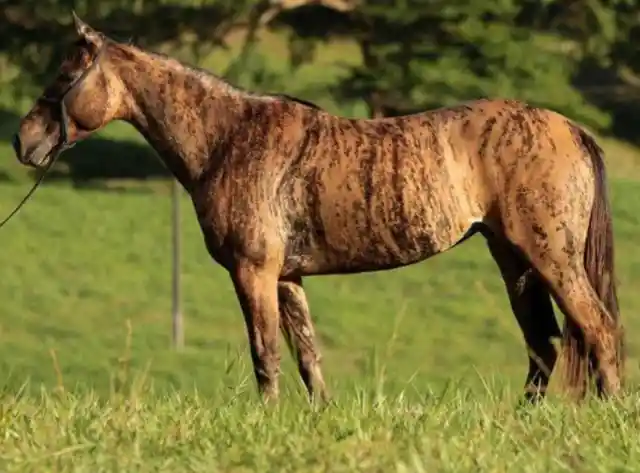
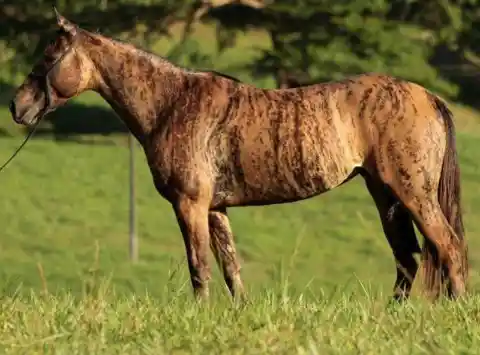
Horses can inherit the gene that causes a brindled coat on rare occasions. This pattern is sometimes called tiger striping for obvious reasons. This horse kind of looks like a tall tiger.
Champagne Horses Are As Expensive As Their Name Suggests
This is a gold champagne horse. The champagne gene affects a horse’s skin rather than its coat. Chestnut horses with the champagne gene almost look blonde because of their light skin. Most horses have dark or black skin, except in areas where they have white markings due to a lack of pigmentation.
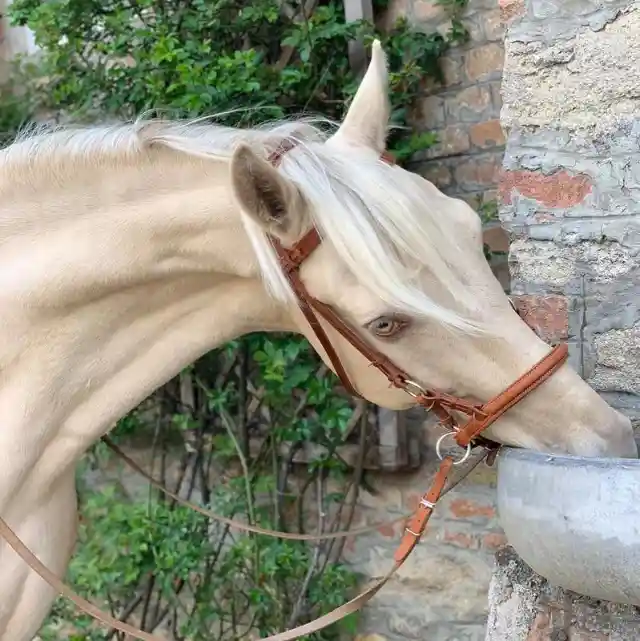
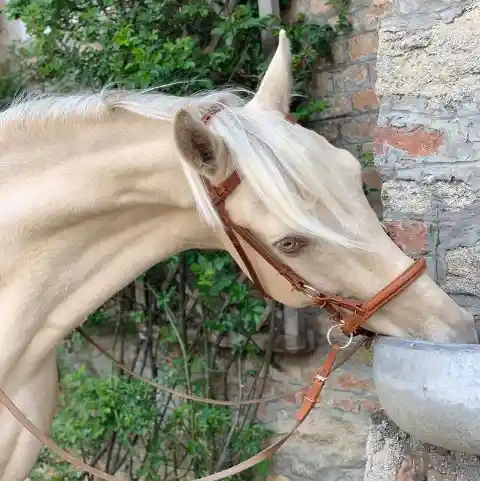
If you look closely at this horse’s ears you can see that her skin is actually pink all over.
This Rabicano Knows She’s Special
Horses with roaning around the top of their tails and around their flanks are known as rabicanos. Sometimes this pattern is called “white tickling.” Rabicanos aren’t true roans because those little white furs are restricted to certain areas of their body.
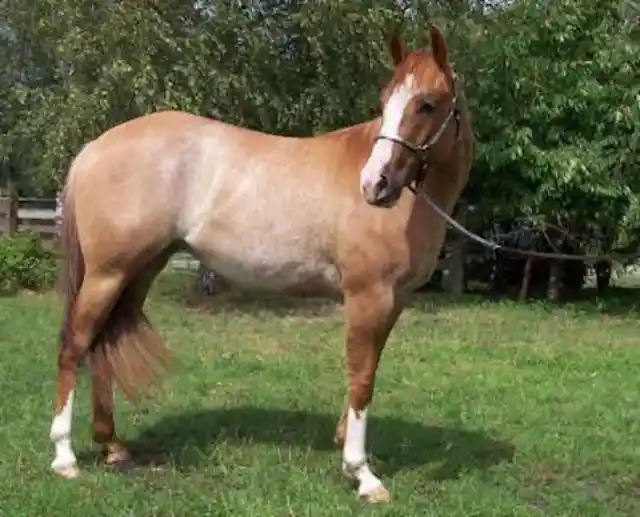
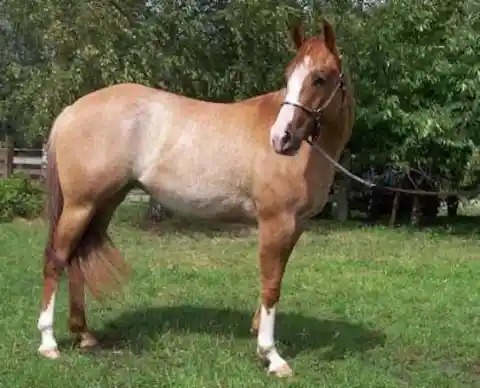
Most rabicanos have two-toned tails. The white fur extend down the tail to create a tail that’s white on top and brown on the bottom. The word “rabicano” is of Spanish origin. “Rabo” means tail and “cano” means white in Spanish.
Appaloosas Come In All Shapes And Sizes
Appaloosas are horses with spotted coats. Like roans, Appaloosas are a combination of a common base coat color and the color of their spots. Darker appaloosas have white spots and lighter appaloosas have dark spots.
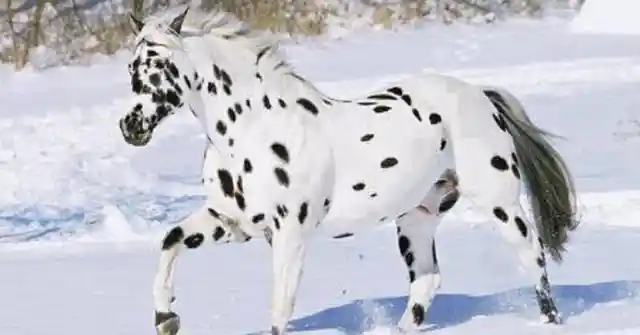
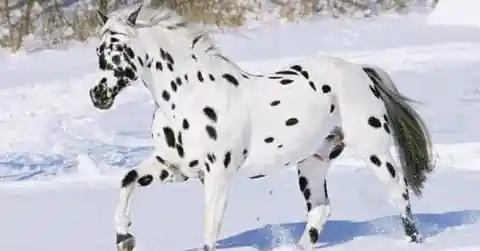
Appaloosa horses also usually have really bright eyes. The whites of their eyes, or their scleras, are visible, which is unique for horses. Appaloosas also have striped hooves, which is a result of their spotted pigmentation extending past their legs.
This Blue Roan Is Enjoying Her Lunch
A blue roan is similar to a red roan, except instead of having a chestnut base coat, it has a black base coat. That base coat is interspersed with a bunch of little white hairs. The fur usually don’t extend into the mane and tail, though.
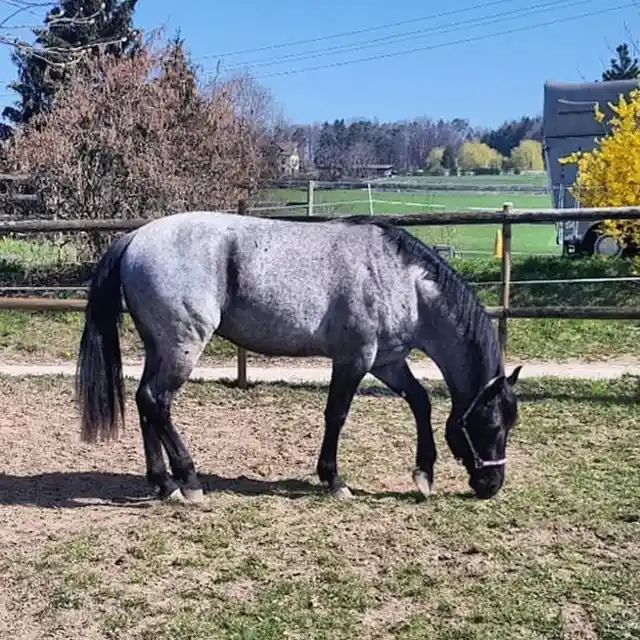
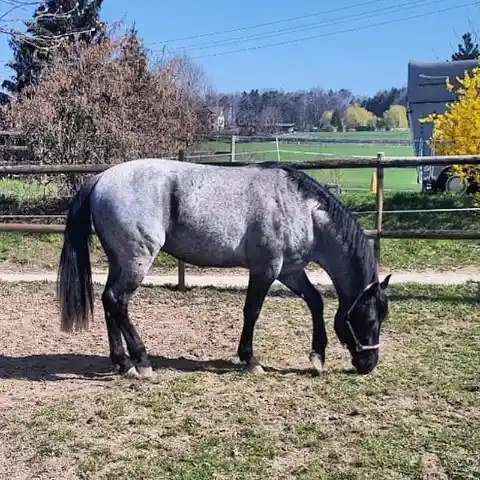
This blue roan has a black mane and tail, but sometimes blue roans have reddish manes and tails. The white coloring in their coats sometimes can make them look blue in certain lighting.
A Stroke Of Genius
This little foal looks like a combination of a blue roan, a red roan, a grey, and a paint. It’s almost like having four horses in one. That white stripe along its withers makes it look like someone took a paintbrush dipped in white paint and just painted one stroke from the ground, up the horse’s leg over its withers.
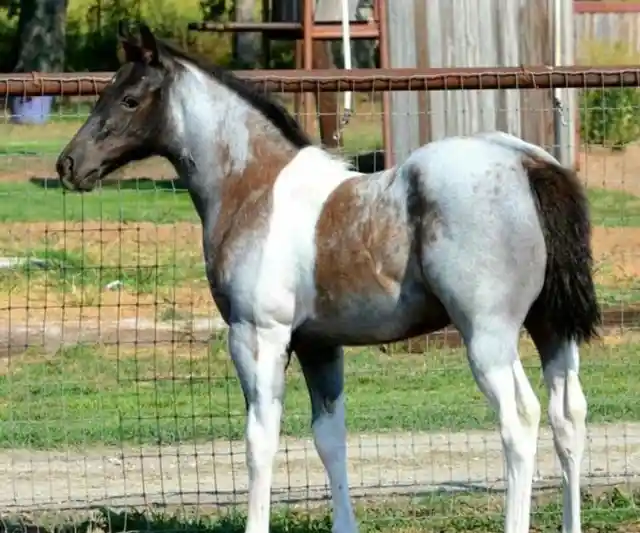
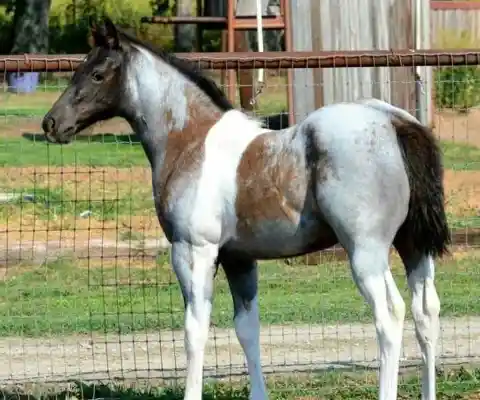
Horses that look like this are extremely rare. This little foal is truly one of a kind.
A Horse That Says It’s A Horse
If you look closely at this horse’s body, you can see that the white patches along his side actually come together to form the letters in the word “horse.” The lower case “h” is on his hind end, and the upper case “e” is on his neck.
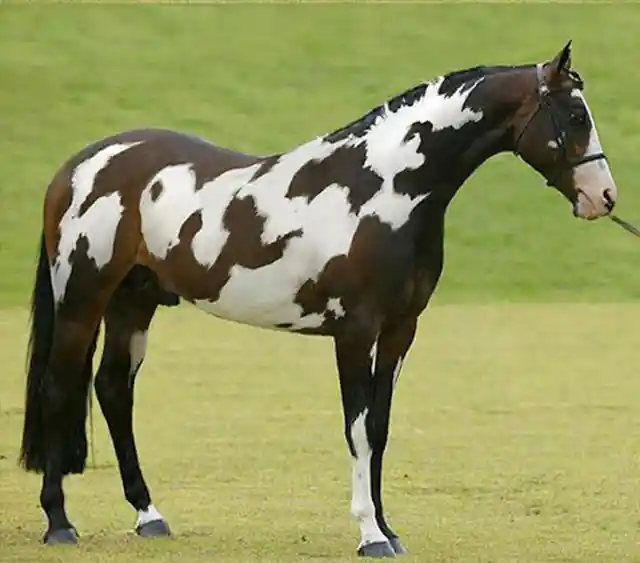
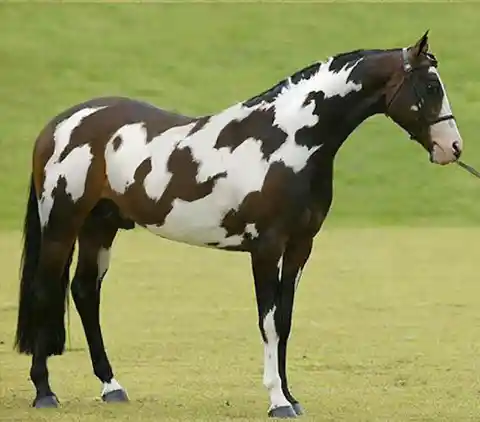
Sometimes people can find neat shapes in a paint’s patches, but this might be the first time anybody’s found the entire word “horse” on a horse!
Classic Champagne
We talked about one champagne breed earlier now here is a different one. This is the Classic Champagne breed of horse. Its genes change the dark hue and make its skin appear lighter.
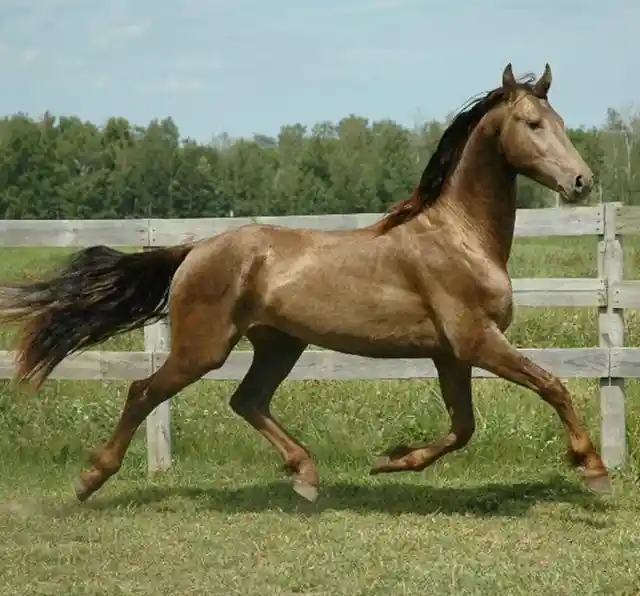
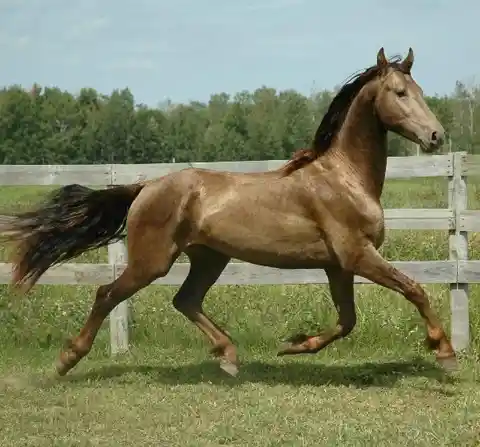
This horse you see here is a great example of that. The black coat she would normally have looks more like a soft brown. If you’re getting one of these breeds, be sure to know what to look for out there!
Liver Chestnut
For a horse, the name Liver Chestnut isn’t all that appealing. What is nice about them is how beautiful their coats are! They are dark brown horses with a lighter mane and tail too.
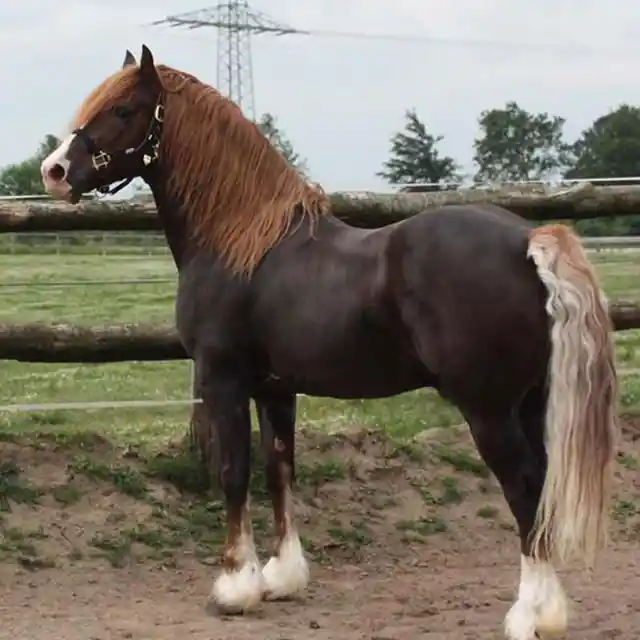
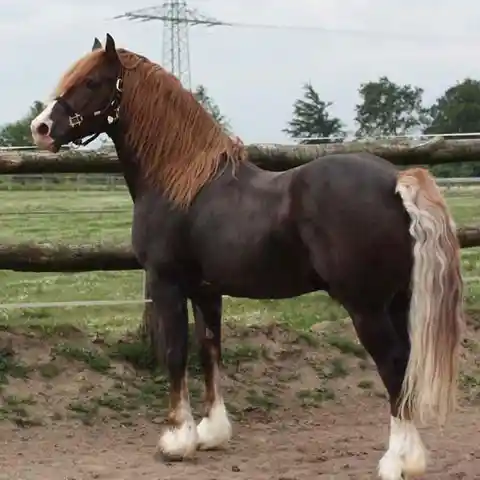
This gorgeous guy has a blonde tail, which is a bit lighter than its mane. Having one of these in your stalls would be great because you’ll always have an interesting looking horse to ride or help with any type of errands.
Bay Overo Paint
Horses with interesting coat patterns never cease to amaze us. What we have here is the Bay Overo. The white on it starts at the belly but rarely crosses over to the back of the horse.
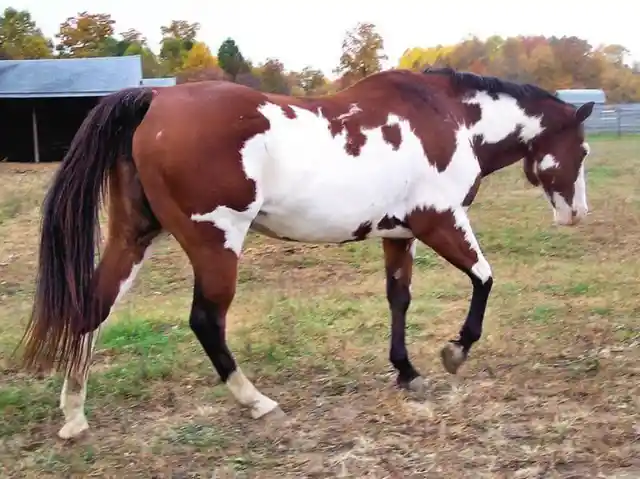
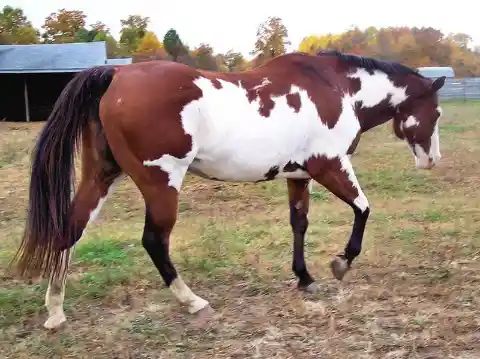
That’s fine with us because the uniqueness of it is clear already at first glance and from any angle. We wonder if other horses get jealous of the breeds like this because they have one set color instead of a few.
Strawberry Roan
How many roans are there, you ask? The answer to that is irrelevant because they are all so beautiful, especially this Strawberry Roan breed. It looks like the horse version of the Strawberry Shortcake ice cream that you can buy at the store.
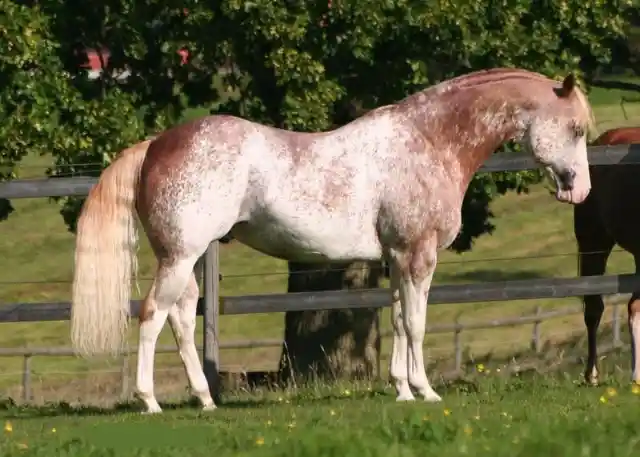
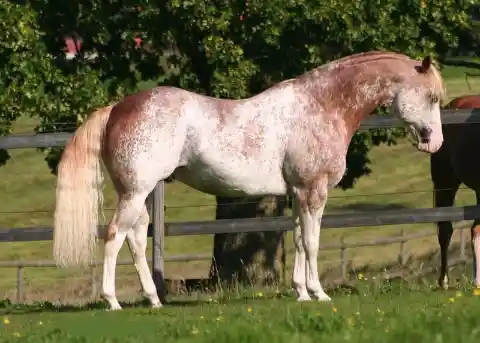
The markings on the Roan mix with white splashes which make for an elegant touch. Imagine riding one of these in the open valley with a few other horses galloping with you.
Silver Dapple Sooty Buckskin
Have you ever encountered a Silver Dapple Sooty Buckskin horse before? They have some of the prettiest coats you’ve ever seen and we love it. They are a combination of three different gene elements.
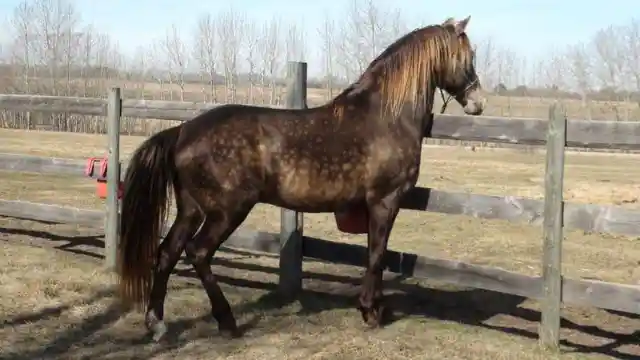
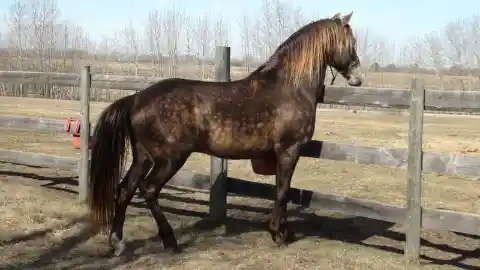
The different genes make up several variations of beautiful colors. They carry dark coats with lighter spots throughout. Their tails are dark and pretty much the same color as their manes. If you see one, you’ll it’s a Silver Dapple Sooty Buckskin
Grullo Dun
The Grullo Dun is one of those horses that you look at and instantly fall in love with if you’re a horse person. They are known for (usually) having tan-gray coats that have a silvery sheen.
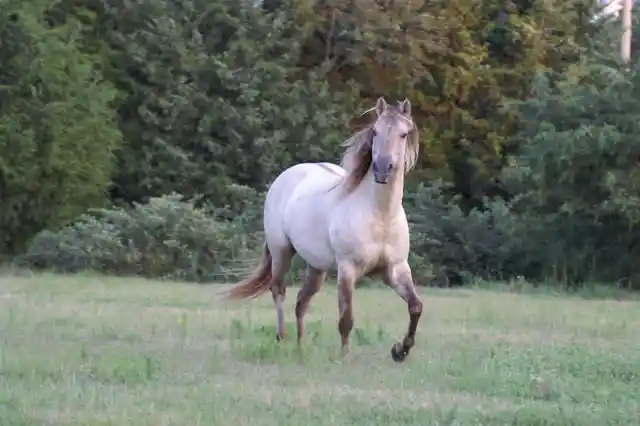
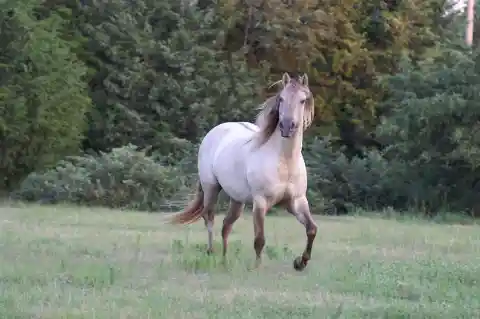
They sometimes have a dark mane and tail and always have striped legs and back. The color scheme makes it interesting because not many horses have this color pattern. Now, if you see a tan-gray horse trotting around, you’ll have a better idea of what it is.
Arabian Horse
The Arabian horse just might be the most expensive horse breed in the world. Not only that, but it is also one of the oldest breeds there is. The prestige surrounding this horse came about in the ’80s.
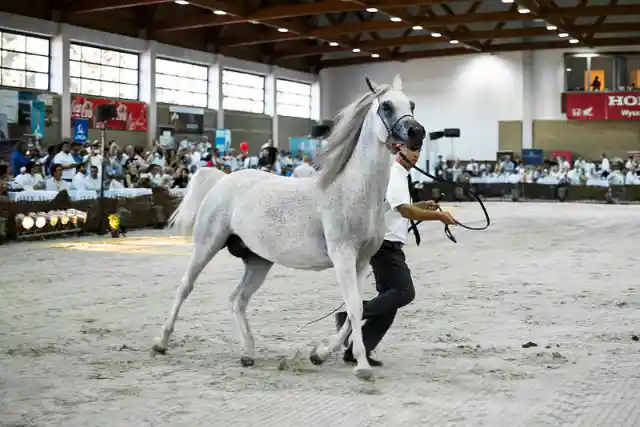
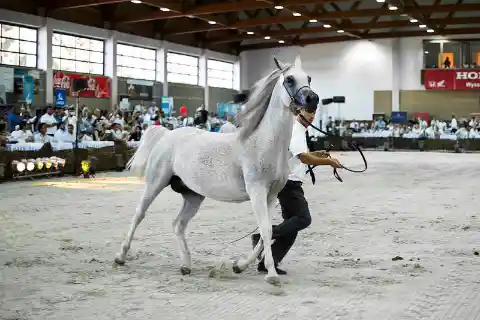
Arabian horses became somewhat of a status symbol in the ’80s. They were likened to fine art in America as well, so when you account for all of that you can see why they are arguably the most expensive.
Thoroughbred
We have England to thank for the Thoroughbred. They developed this breed for horse racing and what a brilliant idea that was. Their unique legs come in handy for long and easy strides — just ask any runner.
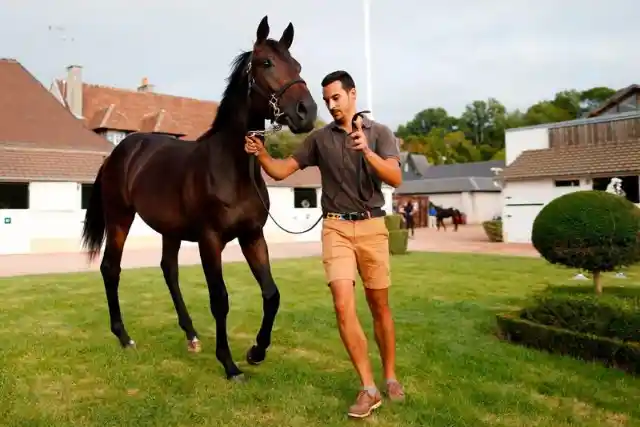
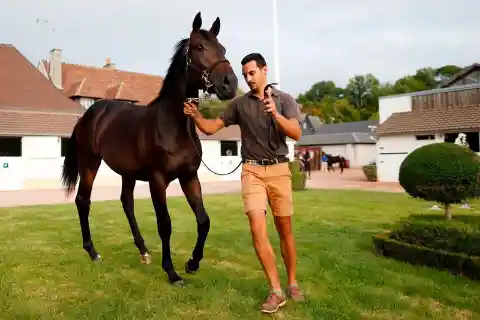
Other than their distinctive legs, they also have wide chests, slender bodies, and shorter backs than many other horses. The Thoroughbred is very sensitive and has tremendous speed and stamina. If you’re betting, then it might be wise to put your money on them.
Quarter Horse
If you had to guess what the most popular breed in the U.S. is, what would you say? The answer isn’t a pony, but rather a Quarter Horse. They got their name from being able to outrun other horses in a quarter mile race.
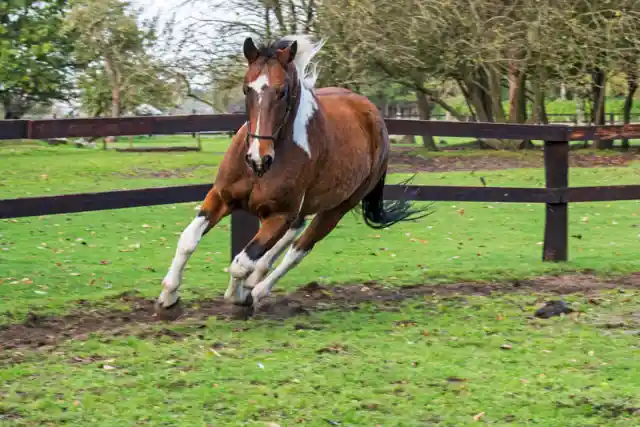
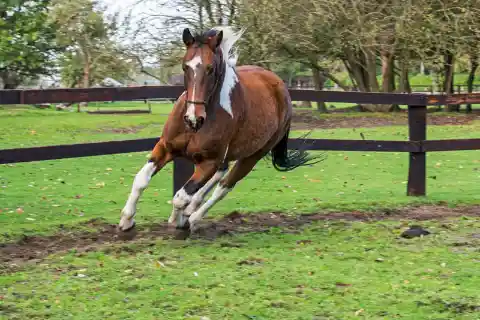
Something else they are good at is rodeo events. Throw them in calf roping, barrel racing, and team roping and you’ll be sure to see a good show (don’t blame us if you don’t).